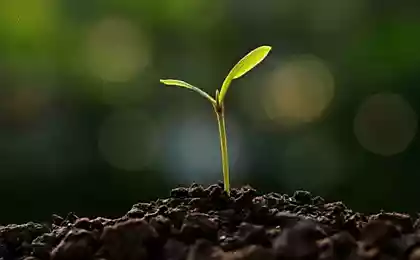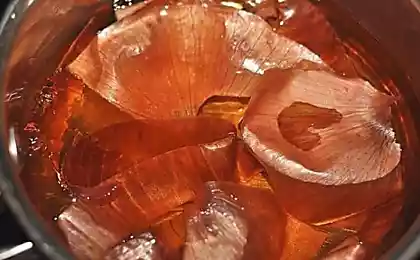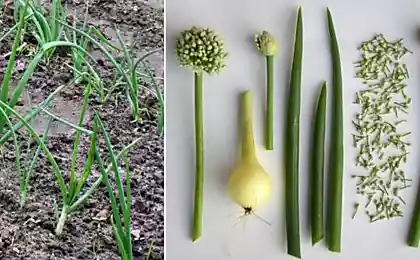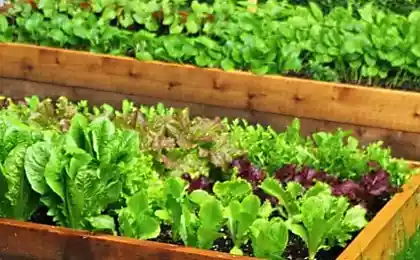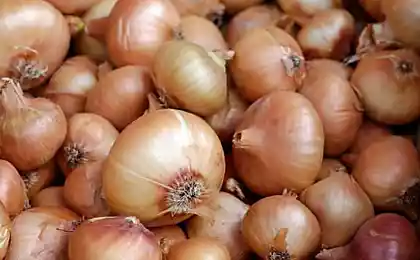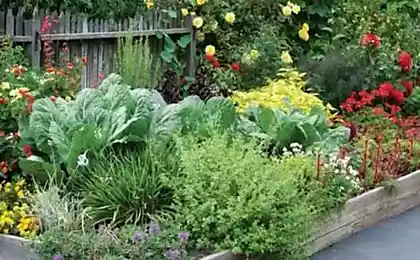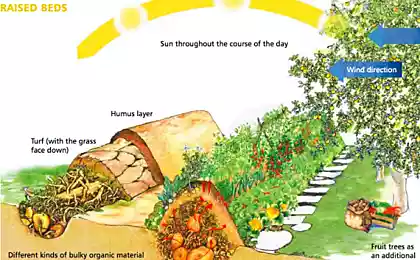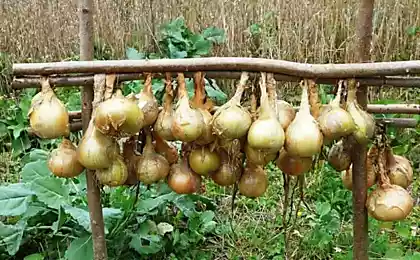164
Golden rules, without the knowledge of which you should not even take up planting onions in open ground
Nowadays, many people think about growing vegetables and greens on their own. After all, in the foreseeable future, the price of literally all food will jump up. On the agenda is one of the basic foods, without which no salty dish can do. Today I'm going to talk about this. when to plant onions in spring and how to prepare it for landing.

Experienced gardeners are responsible for planting onions in the spring, because they know: onions don't come much. And this means that under culture you can safely allocate a separate bed. There are many ways to plant onions. Moreover, it can be grown even at home, right on the windowsill. We told you that too.
Agree, everyone wants to plant onions and get a generous harvest. However, this depends on many factors. And the first one. properly selected planting material. In other words, crowbar. Pay special attention to its appearance. If the seed has already sprouted or looks wrinkled, you can not expect anything good from it. And it's not worth buying either. Also bypass the onion with rot and damage. It just won't grow normally.
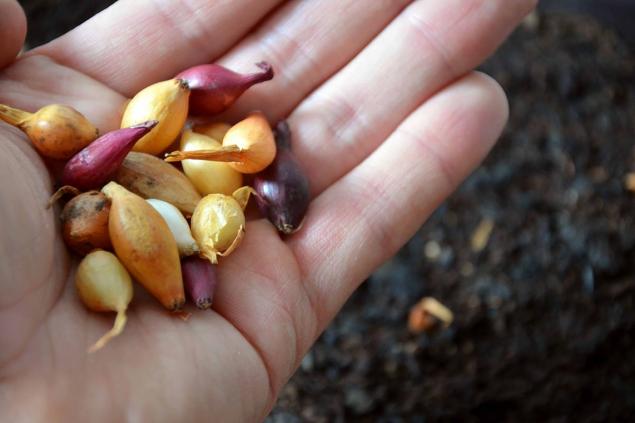
Don't waste your money on sowing. You do not need to seize any opportunity to buy landing material at a discount. Most likely, it will not give a good harvest. It's money wasted. Choose quality bulbs: Small and dense. Besides, look at the husks. It should be whole, shiny and smooth.
Landing time and weather The main question: When to plant onions in spring? Most gardeners do this in May. However, it is important to understand that a lot depends on the climate zone in which you live. For example, in the south of Russia, onions are planted starting from the second half of March. And in the middle lane it is permissible to plant onions at the end of April.

Not only is the month important, but weather. So, wait with the landing is worth it if the street is sufficiently humid and cool. The soil should warm up to at least 15 degrees Celsius. Planting onions in the still cold ground puts you at great risk. There is a high probability that the bow will go into the arrow.
To plant onions in open ground correctly, it is important to prepare not only the sowing, but also the bed. It is better to choose in advance, for example in autumn. For onions, sunny areas are best suited. In the shadows, this culture grows poorly. Soil needs to be loose and nutritious.
I advise you to pay attention to what grew on the beds before planting onions. For example, this culture coexists perfectly on the land where legumes, rye, eggplant, zucchini and potatoes grew. Thanks to these cultures, the soil is enriched with nutrients and becomes more moisture permeable. But cucumbers, garlic and carrots in the role of precursors for onions are not suitable.
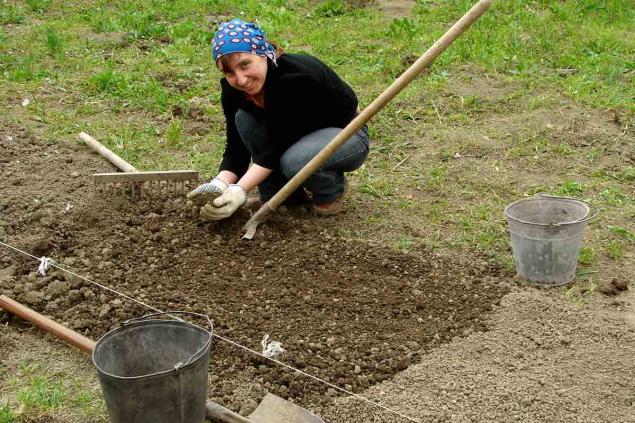
In the autumn period will not be superfluous. dig the bed under the bow. Then it is necessary to add to the ground fertilizing, such as manure or compost. In addition, mineral fertilizer will be useful. After this procedure, the soil should be leveled and disinfected. For this, a solution of potassium permanganate is perfect.
Preparation of cutting
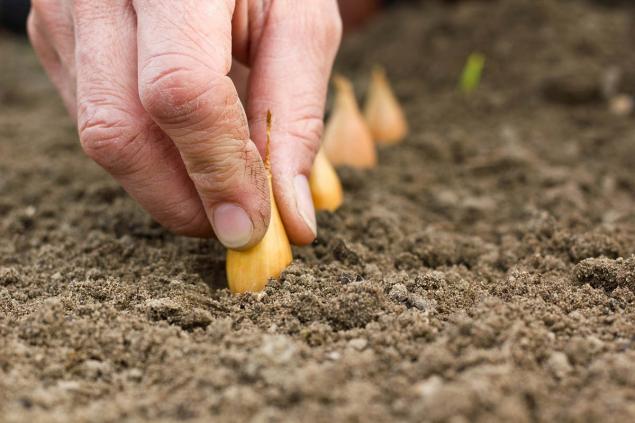
When all the stages are passed, it is time to plant onions in the open ground. The bulbs are pressed into the ground to the end, leaving only small tails on the surface. Between them it is important to maintain a distance of at least 10 cm. Immediately after planting, the seed bed needs to be watered. If you stick to these rules, I'm sure you'll succeed. A generous harvest!

Experienced gardeners are responsible for planting onions in the spring, because they know: onions don't come much. And this means that under culture you can safely allocate a separate bed. There are many ways to plant onions. Moreover, it can be grown even at home, right on the windowsill. We told you that too.
Agree, everyone wants to plant onions and get a generous harvest. However, this depends on many factors. And the first one. properly selected planting material. In other words, crowbar. Pay special attention to its appearance. If the seed has already sprouted or looks wrinkled, you can not expect anything good from it. And it's not worth buying either. Also bypass the onion with rot and damage. It just won't grow normally.

Don't waste your money on sowing. You do not need to seize any opportunity to buy landing material at a discount. Most likely, it will not give a good harvest. It's money wasted. Choose quality bulbs: Small and dense. Besides, look at the husks. It should be whole, shiny and smooth.
Landing time and weather The main question: When to plant onions in spring? Most gardeners do this in May. However, it is important to understand that a lot depends on the climate zone in which you live. For example, in the south of Russia, onions are planted starting from the second half of March. And in the middle lane it is permissible to plant onions at the end of April.

Not only is the month important, but weather. So, wait with the landing is worth it if the street is sufficiently humid and cool. The soil should warm up to at least 15 degrees Celsius. Planting onions in the still cold ground puts you at great risk. There is a high probability that the bow will go into the arrow.
To plant onions in open ground correctly, it is important to prepare not only the sowing, but also the bed. It is better to choose in advance, for example in autumn. For onions, sunny areas are best suited. In the shadows, this culture grows poorly. Soil needs to be loose and nutritious.
I advise you to pay attention to what grew on the beds before planting onions. For example, this culture coexists perfectly on the land where legumes, rye, eggplant, zucchini and potatoes grew. Thanks to these cultures, the soil is enriched with nutrients and becomes more moisture permeable. But cucumbers, garlic and carrots in the role of precursors for onions are not suitable.

In the autumn period will not be superfluous. dig the bed under the bow. Then it is necessary to add to the ground fertilizing, such as manure or compost. In addition, mineral fertilizer will be useful. After this procedure, the soil should be leveled and disinfected. For this, a solution of potassium permanganate is perfect.
Preparation of cutting
- Start with calibration. Sevok needs to go through and throw out all the bulbs with rot, if there are any. Next, it is worth dividing the planting material into larger and smaller. A large crop is suitable for heads, and a small one for feathers.
- Then we dry and warm up the sowing. This should be done if the bulbs have been lying in a cool place for a long time. It is enough to place it in a uniform layer on the windowsill, where the sowing will warm the sun.
- Now the seed is ready for hardening. To do this, the bulbs must be placed in a basin with hot water, and then with cold water. For each procedure was allocated strictly 5 minutes. If you want to accelerate the growth of onions, after hardening the crops can be treated with a special growth stimulator. For example, drugs "Kornevin" or "Epin".
- The final stage before landing. disinfection. Sevok is most often disinfected with a weak solution of permanganate, as well as the soil in which the onion will grow. Then the planting material should simply be washed and dried.

When all the stages are passed, it is time to plant onions in the open ground. The bulbs are pressed into the ground to the end, leaving only small tails on the surface. Between them it is important to maintain a distance of at least 10 cm. Immediately after planting, the seed bed needs to be watered. If you stick to these rules, I'm sure you'll succeed. A generous harvest!
The children took away their beloved granddaughter shouting that I was feeding her
Ekaterina Klimova brings up 4 children, but manages to be a luxurious actress

